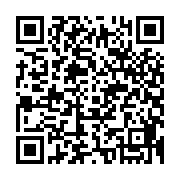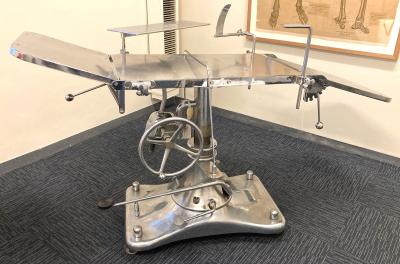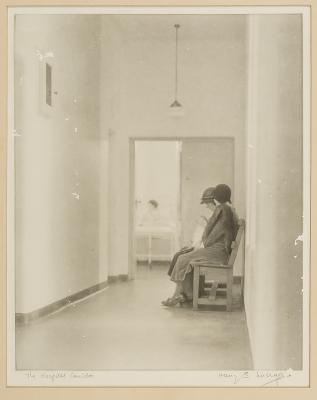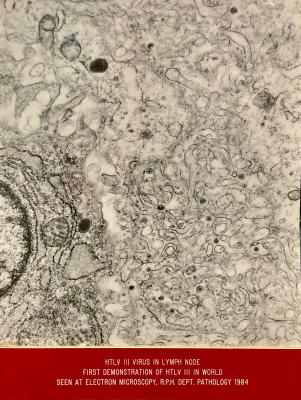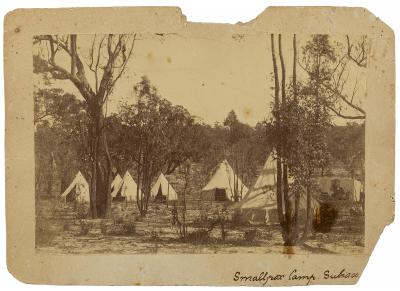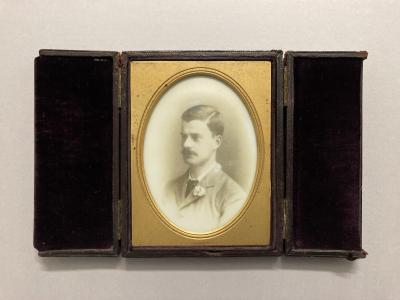Uniform, Nurse
c. 1943Blue cotton, short sleeved, mid-calf uniform. Uniform is front opening with a button placket and a total of four matching metal buttons covered in white fabric, two vertical on bodice and two horizontal securing the front off centre opening at waist. There are three buttonholes on the vertical bodice. Each sleeve is trimmed with a white cuff. The left-hand sleeve has a single chevron stitched to it with large tacking stitches in blue thread, indicating the student nurse was in her first year of training. There are two pockets, a deep left breast pocket and a deep right hip pocket with white decorative stitching. Bodice has three gathers from shoulder and skirt is gathered to a band.
This uniform belonged to Betty Read (nee Kelly). Betty was a trainee nurse at Perth Hospital in 1944 when she caught life-threatening meningococcal meningitis from a patient. She is believed to be the first civilian patient in Western Australia to receive a life-saving dose of penicillin. A new ‘wonder drug’ at the time, penicillin had previously been reserved to treat soldiers fighting in World War 2. Betty’s case marked the start of its wider use in the WA community.
Details
Details
The name ‘Betty Kelly’ is written in large lettering on the inner hemline in black marker. The name ‘Hall’ is also written in black marker but crossed through, suggesting a previous owner or correction.
In 1944 a young nurse Betty Kelly was believed to be the first civilian in Western Australia to receive life-saving penicillin. Betty began her nursing career at the age of 17 and the height of World War 2, first in Midland and then as a trainee at Perth Hospital, now Royal Perth Hospital (RPH). Six months into her new role, she caught meningococcal meningitis from a patient and was admitted in a “dangerous condition”. Betty was in a coma for six weeks as Perth Hospital doctors did everything they could, ultimately using penicillin – a new ‘wonder drug’ -- to save her. Until that time the antibiotic had been reserved for soldiers because supplies were limited. Betty’s case marked the start of its use in the wider WA community. Betty made a full recovery. She went on to marry a patient she had nursed at Baker’s Hospital in West Midland, James Read, in September 1945. Betty retired as a nurse because women could not continue to practice once they were married. Today, Betty’s nursing uniform, cape, aprons and photographs are held in the RPH Museum, kindly donated by her family. Together with her story, they are a tangible link to the early years of antibiotic use.
The development of antibiotics is one of the greatest advances in medicine. Before the discovery, minor diseases and infection from even a scratch could be deadly.
Penicillin was discovered in 1928 by Scottish physician and microbiologist Alexander Fleming. After a holiday, Fleming returned to his laboratory and noticed mould growing on petri dishes he had left out was killing Staphylococcus bacteria.
In 1938, Australian medical scientist Howard Florey and German-British biochemist Ernst Chain began more research into the mould. The work became urgent the following year when war broke out and many soldiers were dying from infected wounds. At the beginning of the 1940s, Florey, Chain and their colleagues succeeded in producing a pure form of penicillin. By 1944 penicillin was available to the Allied forces, but limited supplies meant the drug was not initially available to the public. By mid that year penicillin was in use for the WA civilian population.
A monthly journal published by Perth Hospital – the Perth Hospital Journal – reported in September 1944 the drug was increasingly being used to treat meningitis, venereal disease and burns, with a subsequent dramatic fall in deaths from infections.
The uniform is part of a collection of nursing effects belonging to Betty Read (nee Kelly) c1943 that tells a story of the development of antibiotics. In 1944 nurse Kelly was believed to be the first civilian in Western Australia to receive penicillin. Until that time the antibiotic had been reserved for soldiers because supplies were limited. Betty Kelly’s case marked the start of its use in the wider WA community. The items have strong provenance. They are in excellent condition. They are associated with a major advance in medicine and healthcare and have strong interpretative value.
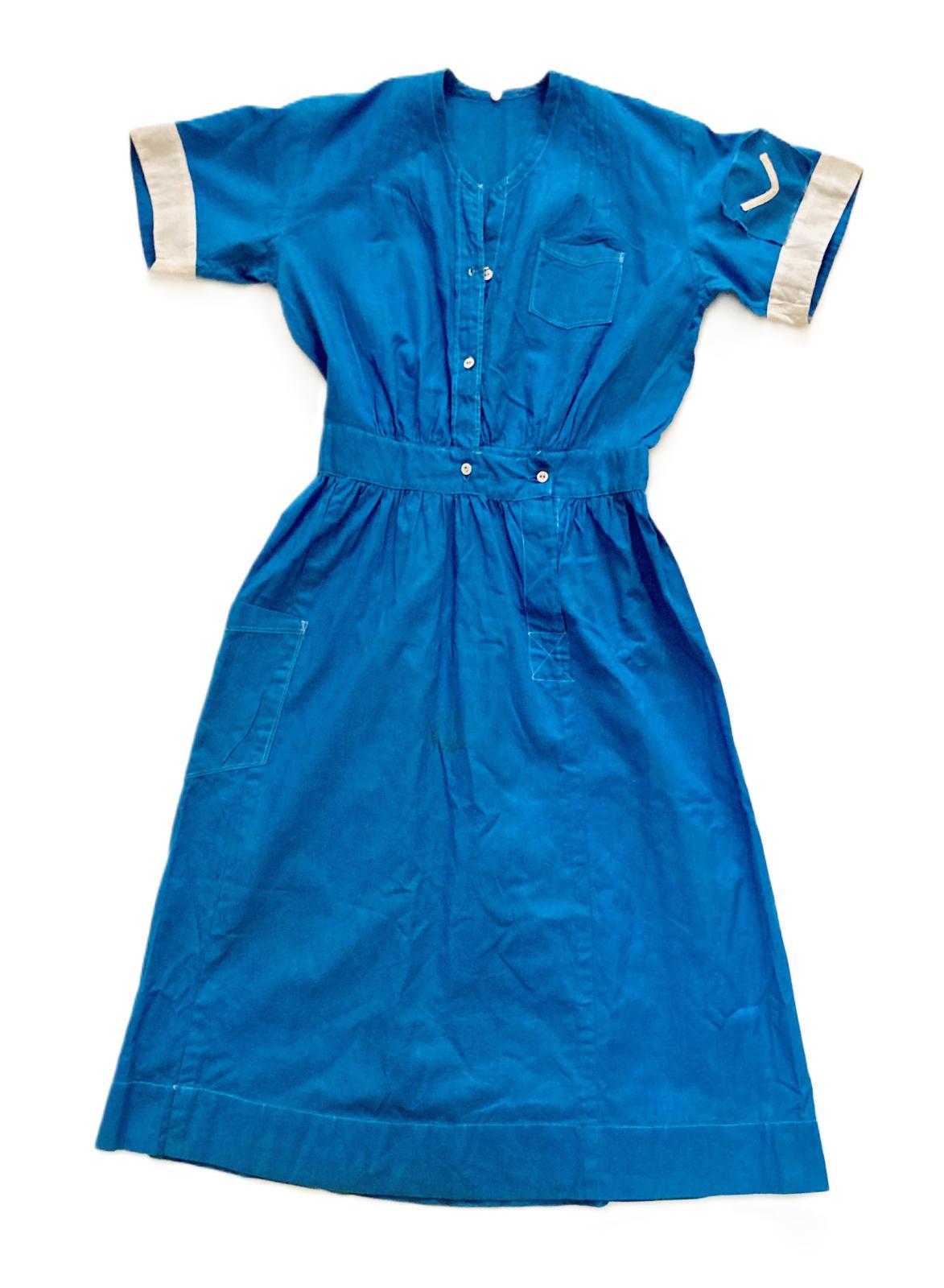

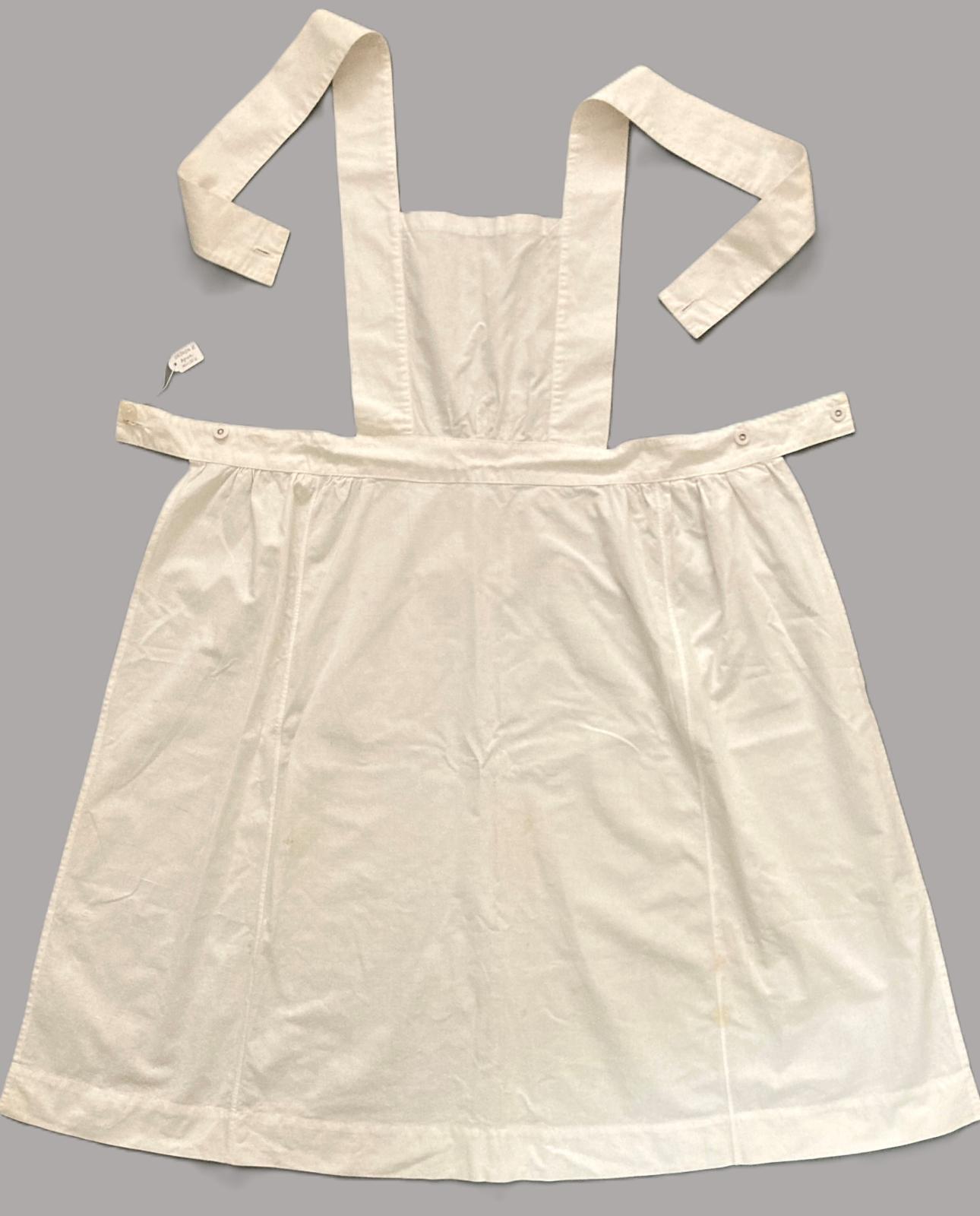
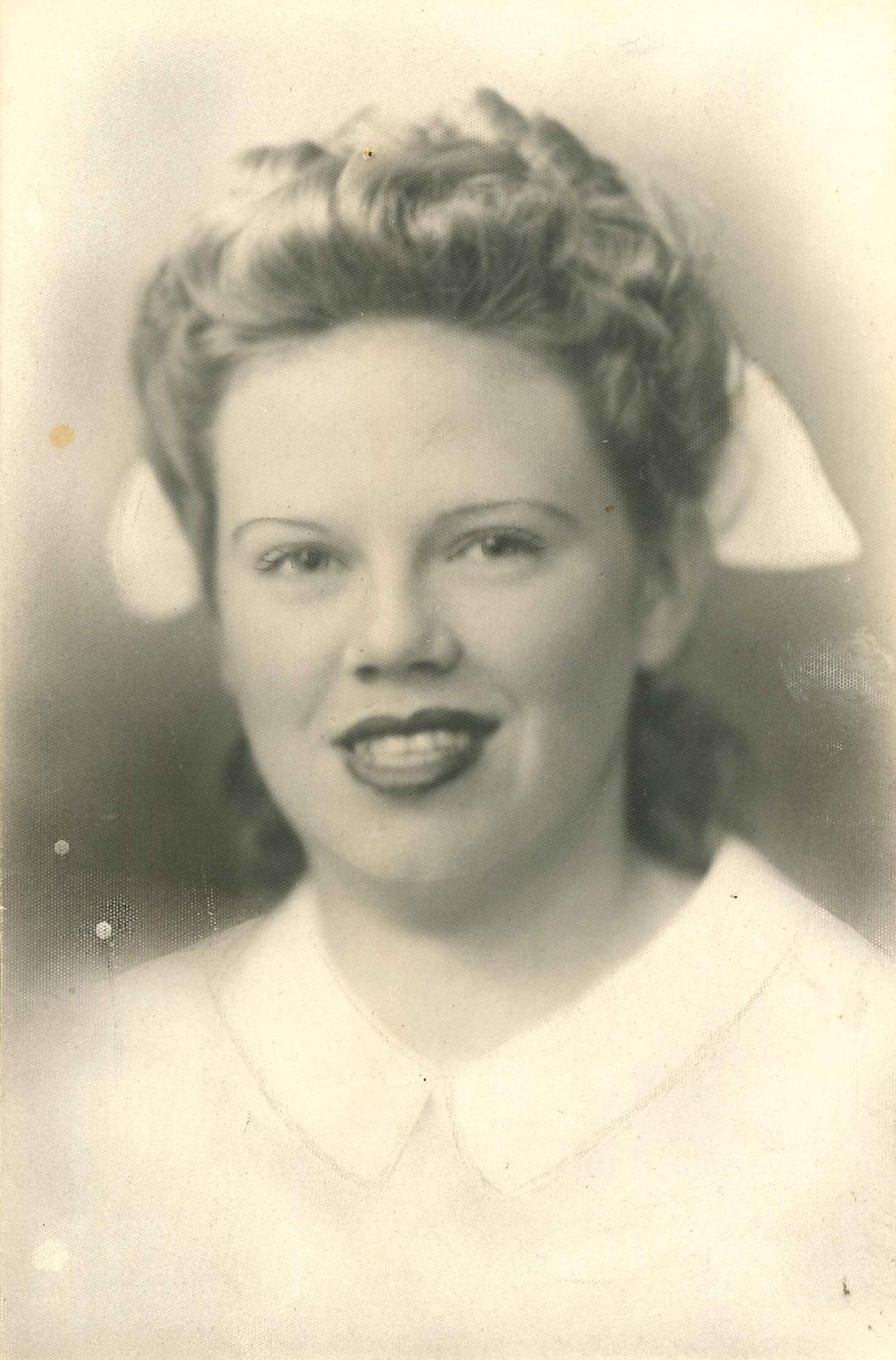
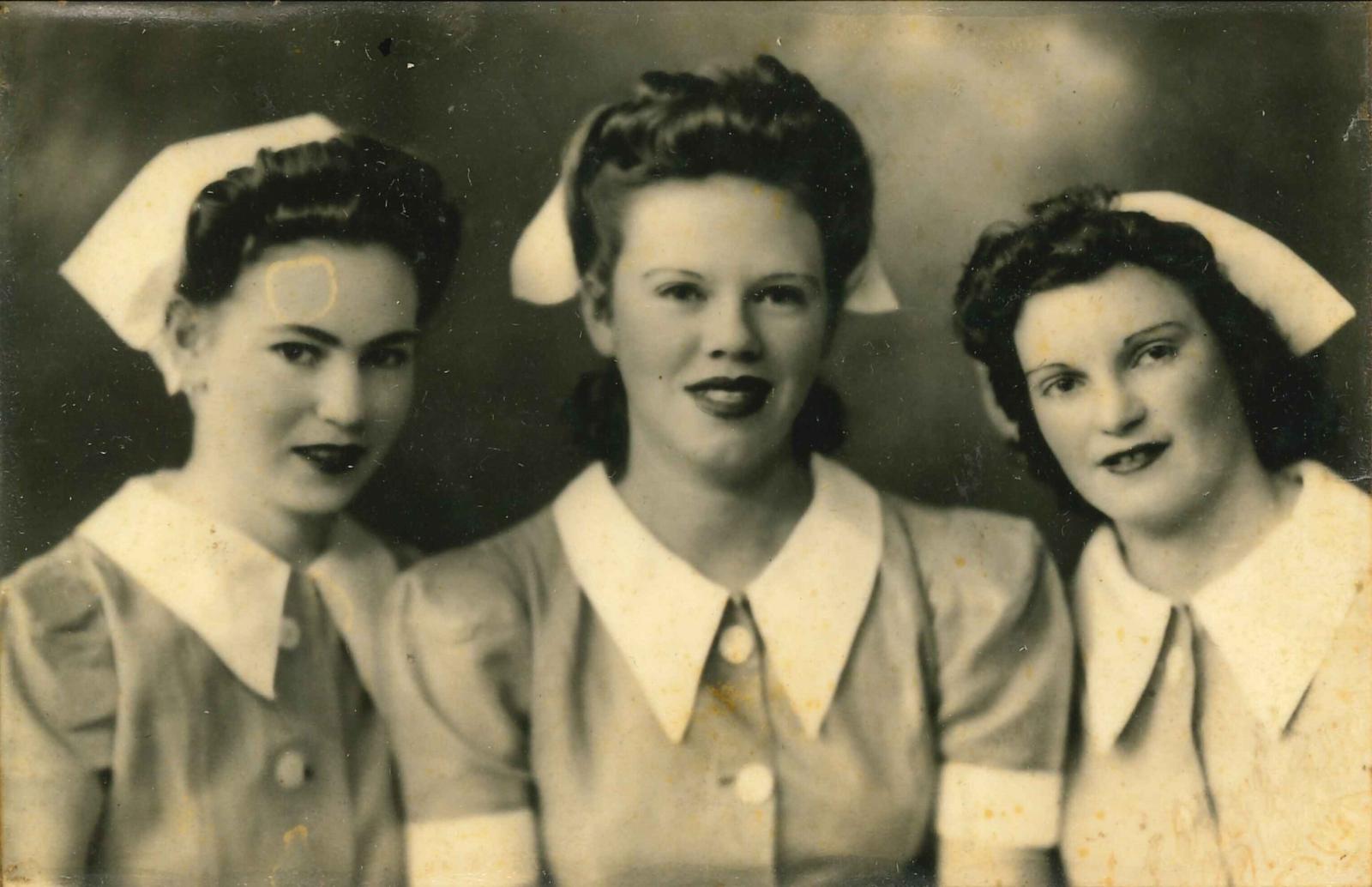
Scan this QR code to open this page on your phone ->
